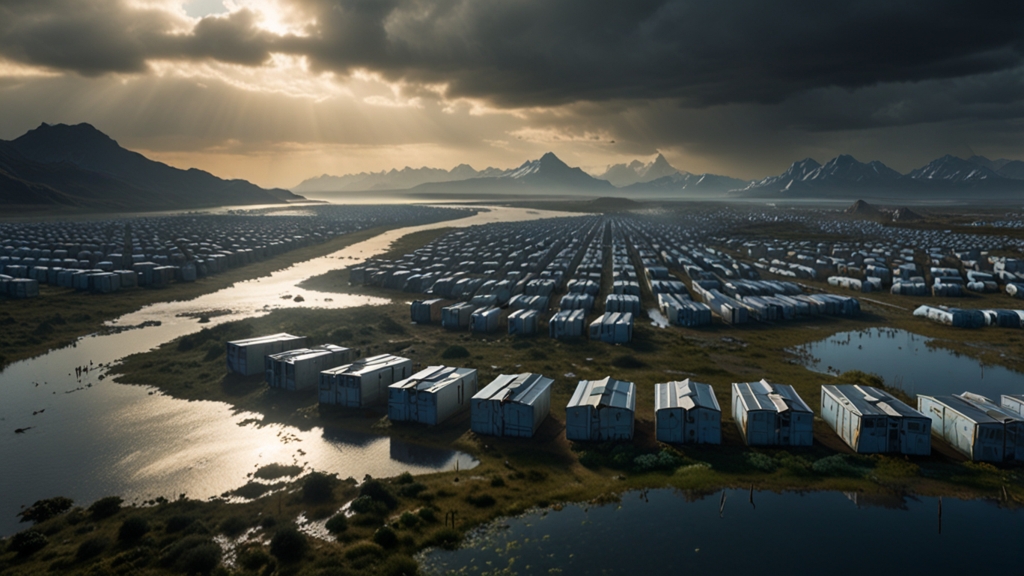Incredible Animal Architectures: Nature's Engineering Marvels
When we think of engineering marvels, we often envision human-made wonders such as towering skyscrapers, intricate bridges, and cutting-edge technology. However, nature is home to some of the most astonishing architects whose creations rival even the grandest human achievements. From the smallest insects to the largest mammals, countless animals demonstrate ingenuity and complexity in their building techniques. In this article, we will explore some of these incredible animal architectures and appreciate their ingenuity.
Termite Mounds: Fortresses of the Insect World
Termites are tiny insects, but their building capabilities are nothing short of extraordinary. Termite mounds, which can reach up to 30 feet in height, are a testament to the collective effort and sophisticated design of these creatures. These structures are meticulously constructed using soil, saliva, and dung to create an elaborate system of tunnels, chambers, and ventilation shafts. This complex network ensures proper air circulation and temperature regulation, essential for the colony's survival.
"The architectural prowess of termites is evident in their ability to construct mounds that withstand harsh environmental conditions and house millions of individual termites, all working together towards a common goal." — Nature Enthusiast
Beaver Dams: Nature's Water Engineers
Beavers are often referred to as nature's engineers for their remarkable ability to alter landscapes. By cutting down trees and strategically placing logs, branches, and mud, beavers create dams that transform flowing streams into tranquil ponds. These dams serve multiple purposes: they provide protection from predators, create a stable environment for raising offspring, and support a rich ecosystem that benefits other species as well.
In addition to dams, beavers construct elaborate lodges with underwater entrances, offering a safe and insulated home. The precision and intentionality behind beaver constructions demonstrate their instinctual engineering skills, making them one of the most fascinating animal architects.
Bird Nests: Diverse Designs for Survival
Birds are incredibly versatile when it comes to nest-building, with each species exhibiting unique designs tailored to their specific needs and environments. From the exquisite hanging nests of the weaver birds to the sturdy mud nests of swallows, avian architects display a range of techniques and materials.
One of the most remarkable avian architects is the bowerbird. Male bowerbirds construct intricate structures, called bowers, decorated with colorful objects to attract mates. These bowers are not nests but are instead elaborate courtship arenas showcasing the male's skill and creativity.
"Watching a bowerbird meticulously arrange its bower is like witnessing an artist at work. The level of detail and dedication is truly awe-inspiring." — Ornithologist
Ant Colonies: Underground Cities
Ants are master builders, creating complex underground colonies that are both functional and efficient. These colonies can extend several feet below the surface, with numerous chambers and passageways designed for specific purposes such as nurseries, food storage, and living quarters.
Leafcutter ants, in particular, showcase impressive agricultural skills by cultivating fungus within their nests as a food source. The coordination and teamwork displayed by ant colonies are crucial to their survival, highlighting the importance of community in their architectural endeavors.
Coral Reefs: Underwater Metropolises
Coral reefs are often described as the rainforests of the sea due to their immense biodiversity and ecological importance. Composed of calcium carbonate skeletons produced by tiny coral polyps, these underwater structures provide habitats for countless marine species.
The intricate, multi-layered formations of coral reefs not only offer shelter and food sources but also protect coastal regions from erosion and storms. The slow yet steady growth of coral reefs over centuries showcases the delicate balance and interdependence of life in marine ecosystems.
"Coral reefs are living sculptures, shaped by countless generations of coral polyps. Their beauty and complexity remind us of the fragility of our natural world and the need to protect it." — Marine Biologist
Conclusion: Nature's Blueprint for Innovation
Animal architectures stand as a testament to the ingenuity and adaptability of the natural world. These structures, whether above ground or below the sea, highlight the incredible engineering feats achieved by diverse species working alone or in harmony. By studying and appreciating these natural marvels, we can gain insights into sustainable building practices and deepen our understanding of the intricate web of life on Earth.










